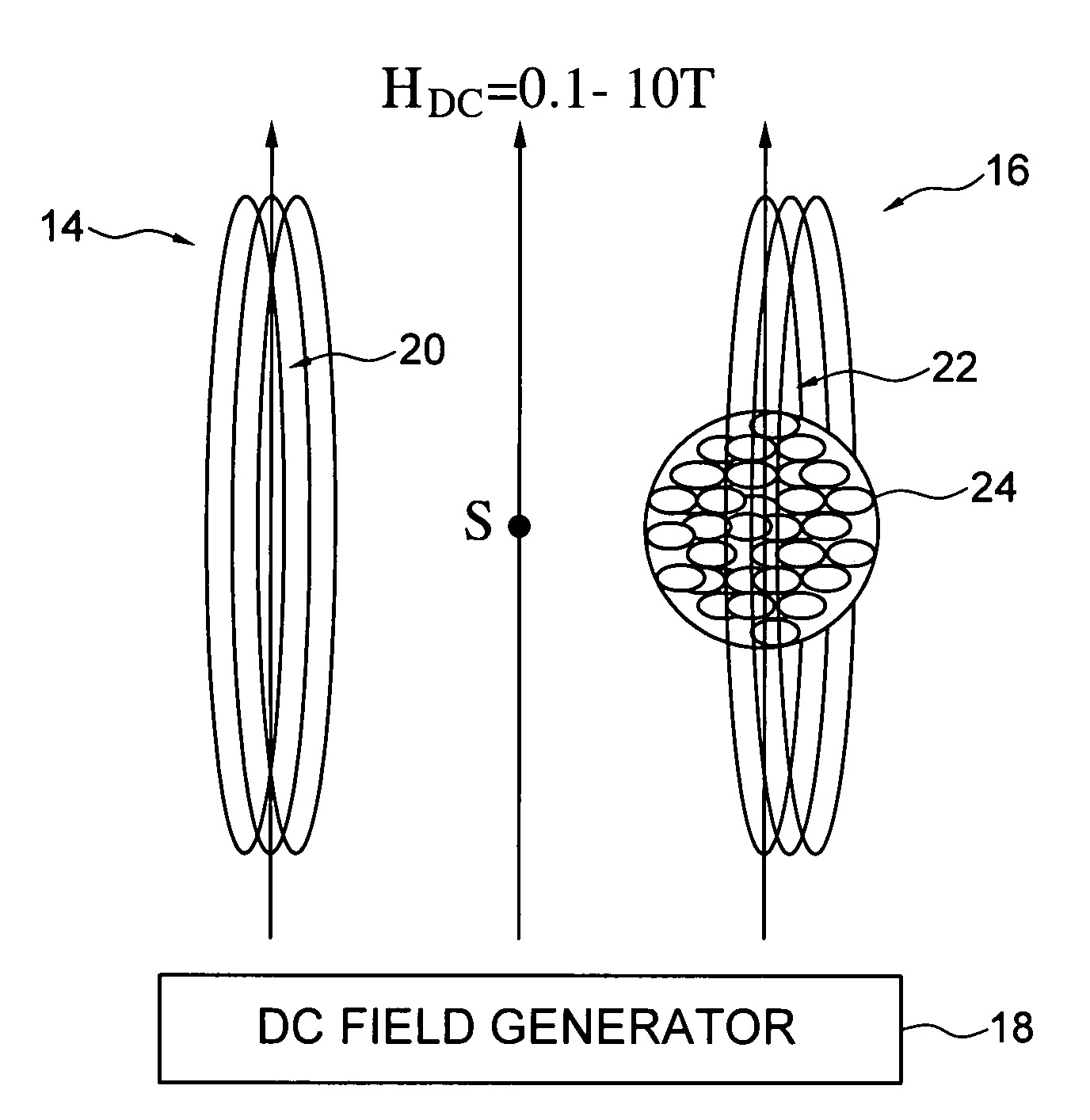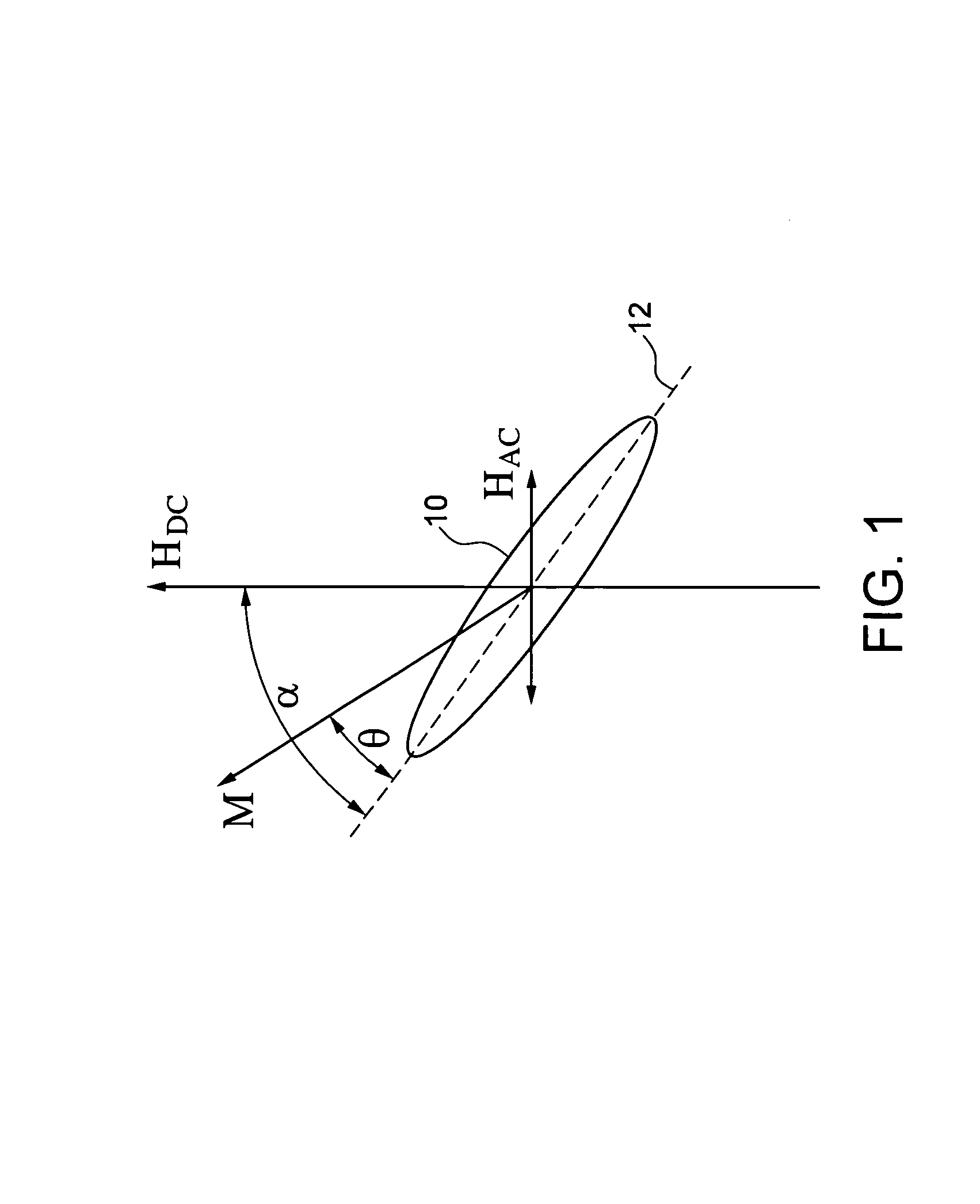Anisotropic nanoparticle amplification of magnetic resonance signals
a technology of anisotropic nanoparticles and magnetic resonance signals, applied in the field of magnetic resonance, can solve the problems of low signal-to-noise ratio in magnetic resonance systems and sensitivity limits
- Summary
- Abstract
- Description
- Claims
- Application Information
AI Technical Summary
Benefits of technology
Problems solved by technology
Method used
Image
Examples
Embodiment Construction
[0032]The invention provides amplification of generated and / or detected alternating transverse magnetic fields produced with inductive coils in the high DC magnetic field conditions typical of magnetic resonance systems. According to the invention, nanoparticles having substantially uniaxial or unidirectional magnetic anisotropy and a reversible transverse susceptibility in the presence of the high DC magnetic field provide either or both of an amplification of the generated signal of an inductive coil or the detected signal of an inductive coil.
[0033]The invention recognizes that a particular magnetic parameter of nanoparticles has values that may be leveraged in a resonance system to amplify generated and detected signals when the nanoparticles are correctly arranged with respect to an induction coil(s) of a magnetic resonance system. The magnetic parameter of interest is otherwise known as the Reversible Transverse Susceptibility, χRT. The invention demonstrates that properly ori...
PUM
 Login to View More
Login to View More Abstract
Description
Claims
Application Information
 Login to View More
Login to View More - R&D
- Intellectual Property
- Life Sciences
- Materials
- Tech Scout
- Unparalleled Data Quality
- Higher Quality Content
- 60% Fewer Hallucinations
Browse by: Latest US Patents, China's latest patents, Technical Efficacy Thesaurus, Application Domain, Technology Topic, Popular Technical Reports.
© 2025 PatSnap. All rights reserved.Legal|Privacy policy|Modern Slavery Act Transparency Statement|Sitemap|About US| Contact US: help@patsnap.com



